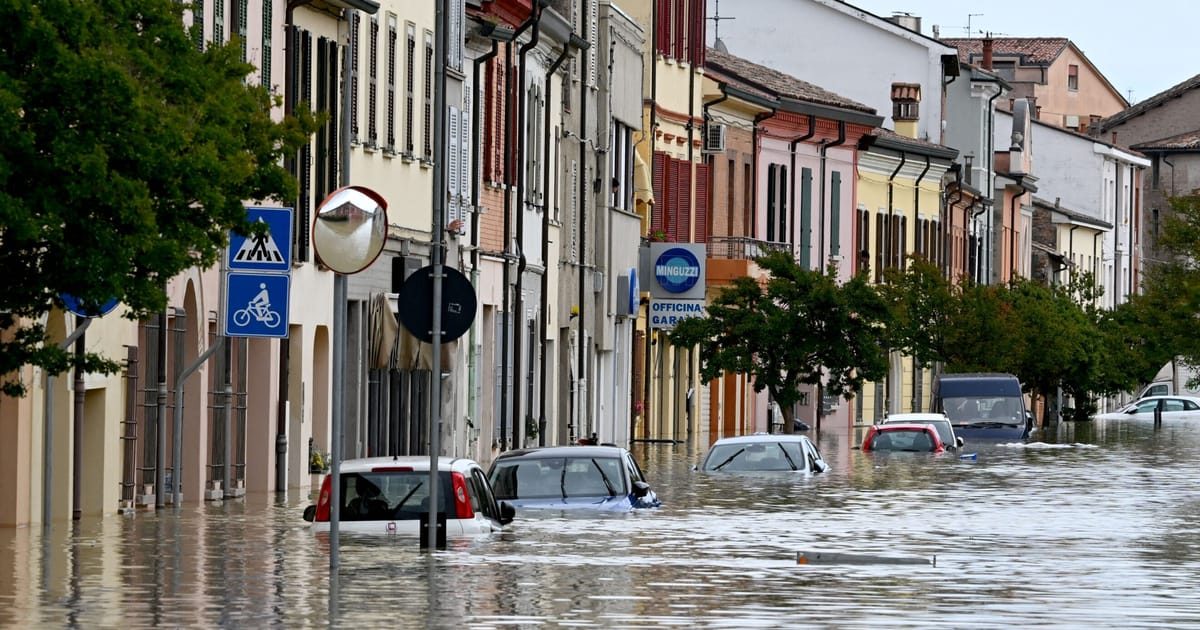ROME — The worst floods in 100 years have triggered finger pointing over Italy’s slow progress in stabilizing its land and soil despite throwing billions at the problem.
Torrential rains following months of drought have caused floods in the northern and eastern regions of Emilia Romagna and Le Marche that have killed at least 14 people and left an estimated 20,000 homeless. Dozens of cities and towns were submerged and thousands of landslides occurred after around six months’ rain fell in 48 hours. Pierluigi Randi, the president of Ampro, the association of weather experts, said it was the worst flood to affect Italy in a century.
The floods sparked a torrent of questions about why vast amounts of funding allocated for structural works to counter hydrogeological instability has never been used.
Italy is particularly vulnerable to flooding: It suffers two-thirds of Europe’s landslides; 94 percent of municipalities are at risk of landslides, flooding or coastal erosion; and more than 8 million people are affected, according to a 2021 report by ISPRA, the national institute of environmental research and protection. Land and soil degradation — often triggered by human activity such as deforestation, illegal building, intensive farming and poor maintenance of watercourses — is increasingly compounded by extreme weather events associated with climate change.
Over the past 20 years, 11,204 projects worth €10.5 billion have been financed in Italy. But only 4,800 of the projects, worth €3.6 billion, were completed, according to ISPRA.
The money is there …
Italy’s problems in spending investment funds in time are nothing new. It came second-bottom in the European Union for its use of EU cash, having spent only 62 percent of the budget allocated in the 2014-2020 programs by the end of December 2022, according to data published on the European Commission’s Cohesion Data portal.
In 2014, then-Prime Minister Matteo Renzi’s government allocated €8.4 billion to mitigate hydrogeological risk, but little of that money was used before his administration came to an end, and Giuseppe Conte’s nationalist government of 2018 canned the project. The funds remain largely unspent and were added to Italy’s post-pandemic economic Recovery Plan funded by the European Commission.
Renzi said hydrogeological works should be the government’s top priority. “Italy should invest in floodplains and dams rather than the football stadiums. This country throws away opportunities. The money is there and we don’t spend it,” he told SkyTG24 on Thursday.
A report by Italy’s Court of Auditors has blamed the slow progress on hydrogeological works on a lack of project managing capability and technically capable people in local governments.
Italy’s inability to spend funding effectively could result in delays in its Recovery Plan, which has allocated €2.5 billion to hydrogeological works.
Local municipalities struggle to use the accounting and project management software necessary to handle the extra work, creating resistance, according to an official who worked on the implementation of the plan. The European Commission also is demanding more updates on implementation, creating another layer of bureaucracy and slowing work down, he said.
Antonello Fiore president of SIGEA, the Italian society of Environmental Geology, told POLITICO the average project takes five years to complete: “This is too long. This is often because the project quality is not up to the rules and requirements. After years of underinvestment the local municipalities lack qualified personnel with technical know how — engineers, agronomists, geologists — to carry out projects in a short time. The administrative machine has slowed.”








